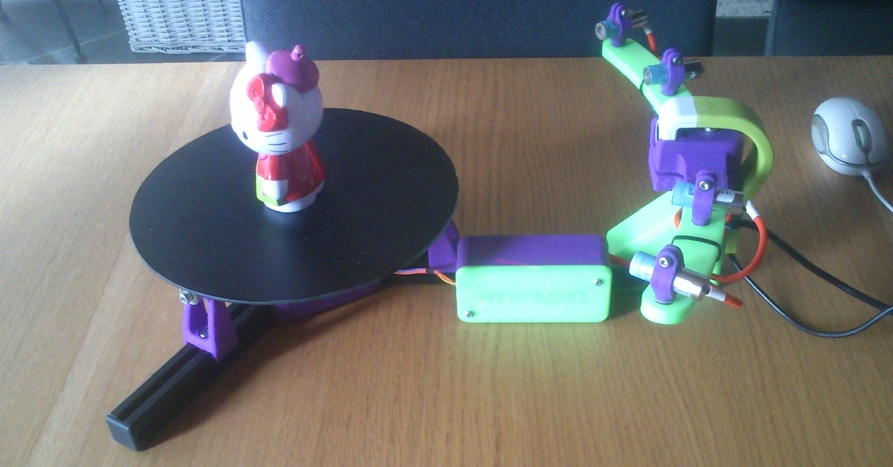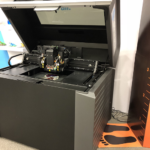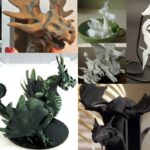

The sooner that affordable 3D scanners are made available, the sooner the consumer side of the 3D printing market will expand. You see, currently the majority of us lack the 3D modeling skills and capabilities to design our own models for printing. We generally rely on 3D model repositories such as Thingiverse, 3DSha.re, and MyMiniFactory to come up with items to print. Although there are literally hundreds of thousands of models available, many of them free, there still is something missing from the overall 3D printing ecosystem.
The ability for almost anyone to copy an item on one’s desk could have major implications on the economy in general, but most of all on the 3D printing and design spaces. Although this is already possible via 3D scanners, just like we’ve seen with 3D printers, prices for scanners have started out quite high.
Over the last three to four years we have seen 3D printer prices drop by an order of magnitude, if not more. This has enabled pretty much anyone who can afford a smartphone to afford one of these amazing machines for about the same price. 3D scanning technology may be a few years behind in terms of price drops, but significant declines in prices have already begun. Scanners are already available for under $1,000, allowing for adoption by a greater number of individuals. One man, however, may have just taken affordability up several notches.
A designer from Graty, Belgium named Fabio Ferretti has recently designed and posted the schematics for a 3D printable, open source 3D scanner which has a cost of under $30. Yes, I said under $30!

Called the Sardauscan, the files for this device, which also include a list of parts one must purchase, have been uploaded to Thingiverse for anyone to download and 3D print out. Ferretti’s design has 13 separate 3D printable files, and will require the following easy-to-find non-printed components (Ferretti used and linked to the most affordable ones he could find):
- M3 Screws (16 and 20 mm)
- M4 Screws (12 ans 20 mm)
- Chinese Arduino nano ($4)
- Chinese stepper motor and controller ($5)
- 1 to 4 line lasers ($2.5 piece)
- Hercule HD twist ($15)
- 20 x 20 profile (can be printed or purchased)
Based on the above, components needed will run between $26.50 and $35 depending on the number of line lasers used. The more lasers added, the better the resolution of the scan will be, but also the tougher it will be to calibrate each laser.
Ferretti is still in the process of developing Arduino firmware and an application for the scanner, which is inspired by FreeLSS. Currently he has uploaded an alpha version of the firmware to GitHub, but has a lot of work left to do.
This design certainly enables almost anyone with a few skills to print and assemble their own 3D scanner with minimal costs. Now it’s just a matter of time before a company takes this open source design and begins mass producing it for a slightly higher price. Let us know if you have printed out and assembled this incredibly affordable 3D scanner. Share some scans with us in the Sardauscan 3D Scanner forum thread on 3DPB.com.
If you're looking to get architectural 3D animation in the USA, our service provides an exceptional way to bring your architectural concepts to life through dynamic, immersive visuals. Through our platform, you can easily request high-quality 3D animations that showcase your designs in motion, offering a detailed view of your project from multiple angles and perspectives. Whether it's for a real estate development, a commercial building, or an urban planning project, our expert team ensures that every detail is captured in a visually compelling animation.
Through our website, you can seamlessly get architectural 3D animation tailored to your project’s specific needs. With our help, you can offer potential clients or investors an engaging experience that goes beyond static images. By integrating CGI animations with real-world settings, lighting, and textures, our team creates a lifelike experience that allows your audience to interact with your project as though it were already built. This service is perfect for presenting complex designs in a clear, visually attractive way that stands out in the competitive architectural market.




